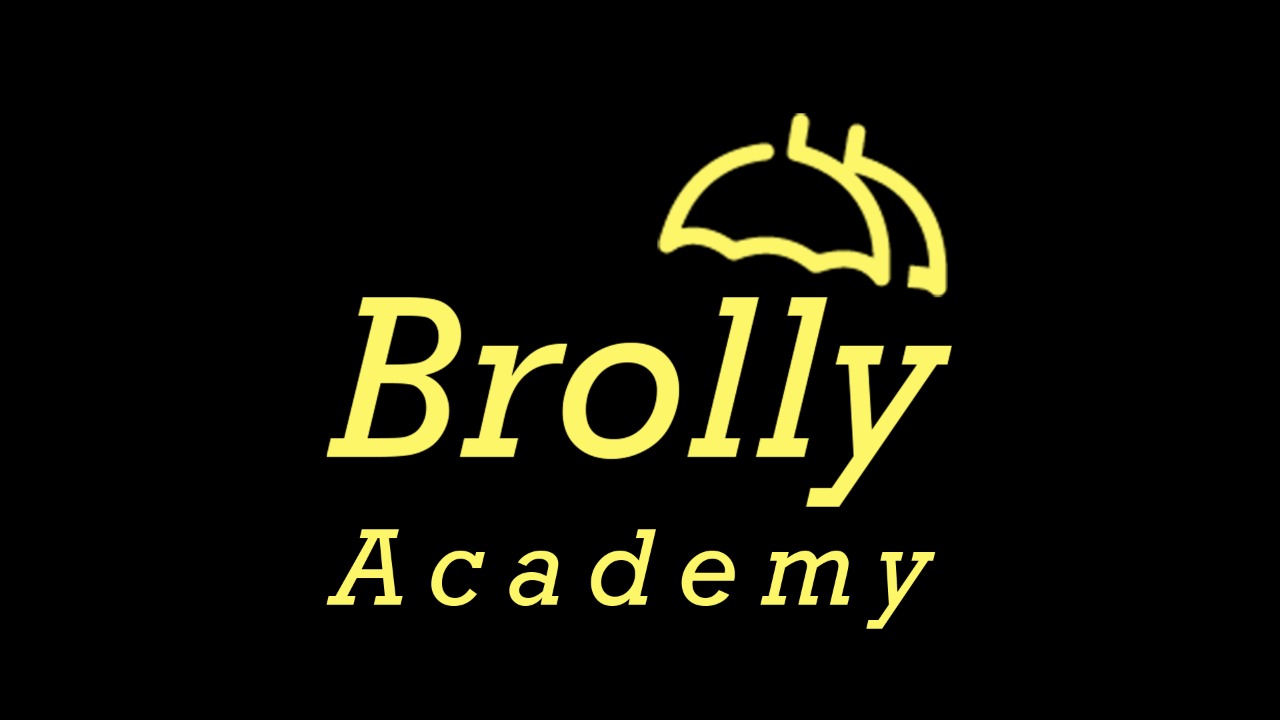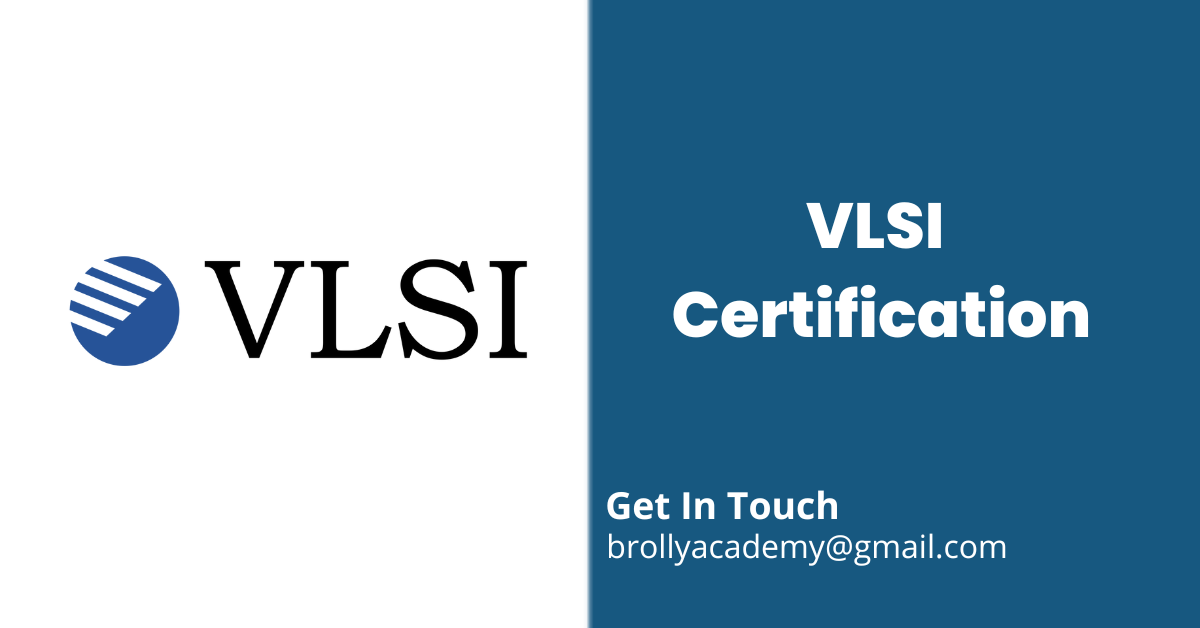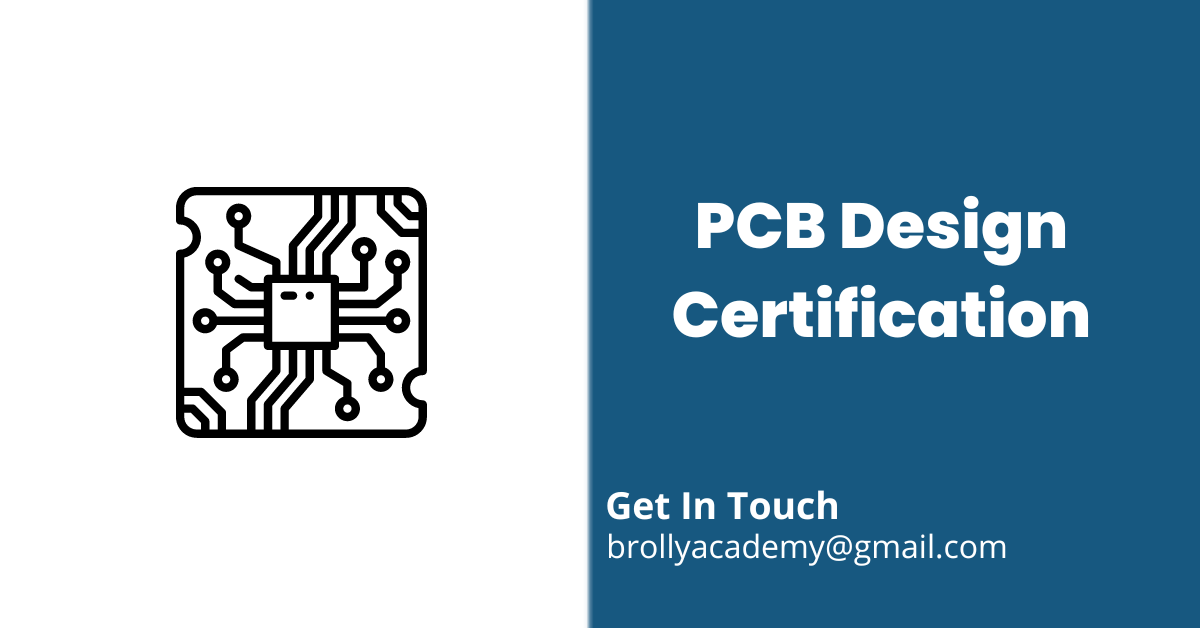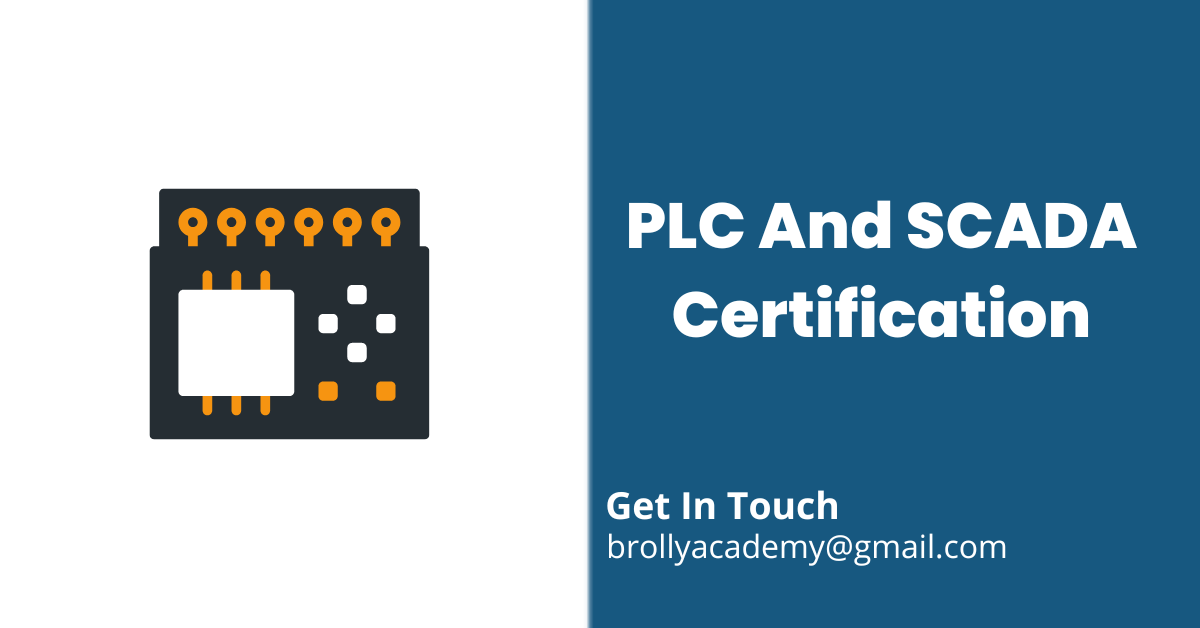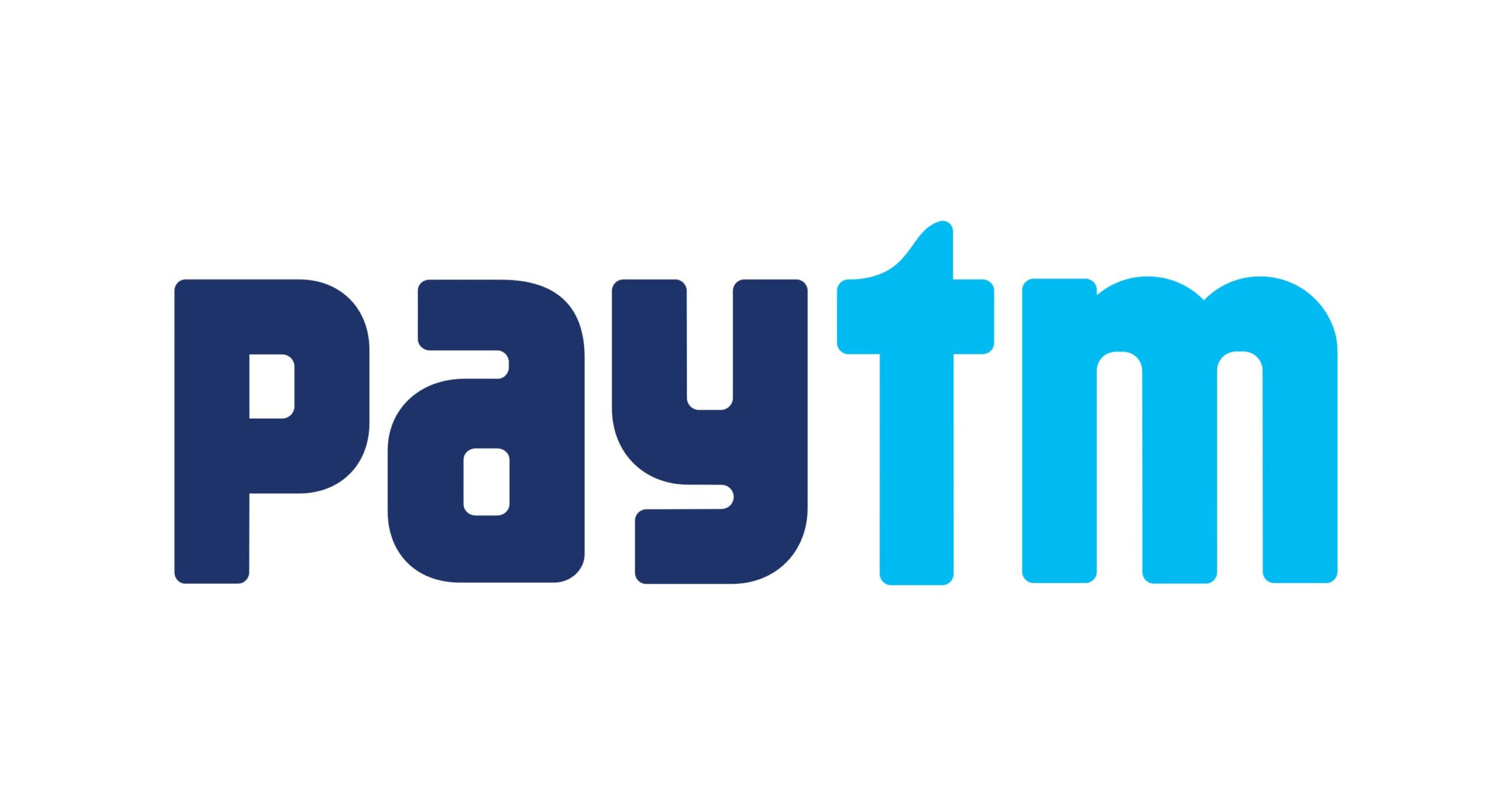Embedded Systems Course in Hyderabad
with
100% Placement Assistance
- Expert Trainer with 15+ Years of Experience
- Lifetime Access to Recorded Videos
- Certification & Career Gudiance
Table of Contents
ToggleEmbedded Systems Course In Hyderabad
Batch Details
| Trainer Name | Mr. Vamsi Raju |
| Trainer Experience | 15+ Years |
| Next Batch Date | 15th July 2025 (11:00 AM Online & Offline ) |
| Training Modes | Online Training (Instructor-Led) Offline (Classroom ) |
| Course Duration | 3 Months |
| Call us | +91 81868 44555 |
| Email Us | brollyacademy@gmail.com |
| Demo Class Details | ENROLL FOR FREE DEMO CLASS |
Embedded Systems Course Syllabus
Course Contents
- Definition and Characteristics of Embedded Systems
- Applications and examples
- Embedded Systems vs. General-Purpose Systems
- Introduction to microcontrollers
- Architecture of microcontrollers (e.g., ARM, AVR, PIC)
- Embedded programming languages (C, Assembly)
- Embedded development tools and environments
- Serial communication protocols (RS232, RS485)
- I2C and SPI communication
- CAN (Controller Area Network) protocol
- Ethernet and Wireless communication (Bluetooth, Wi-Fi)
- Overview of C language
- History and development of C
- Structure of a C program
- Basics of compiling and executing C programs
- Memory allocation functions (malloc, calloc, realloc, free)
- Dynamic arrays and linked lists
- Memory management best practices
- Arithmetic operators
- Relational and logical operators
- Bitwise operators
- Conditional (ternary) operator
- Operator precedence and associativity
- Conditional statements (if, else, switch)
- Looping statements (while, for, do-while)
- Break and continue statements
- Nesting and labeled loops
- Function definition and declaration
- Function arguments and return values
- Function prototypes
- Recursion and recursive functions
- Scope and lifetime of variables
- One-dimensional and multi-dimensional arrays
- Strings in C
- String manipulation functions
- Character arrays and pointers
- Introduction to pointers
- Pointer arithmetic
- Pointers and arrays
- Pointers to functions
- Structure definition and initialization
- Nested structures
- Unions and their uses
- Bit-fields in structures
- File operations in C (opening, closing, reading, writing)
- Sequential and random file access
- Error handling with files
- Binary and text file handling
- Memory allocation functions (malloc, calloc, realloc, free)
- Dynamic arrays and linked lists
- Memory management best practices
- Macro definitions
- File Inclusion
- Conditional compilation
- #define and #undef directives
- Enumerations
- Typedef
- Command-line arguments
- C Standard Library functions
- Error handling and exceptions in C
- Overview of System Programming
- Role of System Programming in Software Development
- Understanding Operating Systems
- Introduction to C Programming Language for System Programming
- Process Creation and Termination
- Process Communication and Synchronization
- Multithreading and Thread Safety
- Concurrency Issues and Solutions
- Memory Hierarchy
- Virtual Memory Concepts
- Dynamic Memory Allocation and Deallocation
- Memory Mapping and Shared Memory
- Overview of I/O Systems
- Buffering and Caching
- Basic I/O System Calls
- Device Drivers and Interrupt Handling
- Signals and Signal Handling
- Process Scheduling
- Inter Process Communication (IPC)
- Forking and Executing Processes
- Understanding the Linux Kernel
- Kernel architecture
- Kernel space vs. user space
- Importance of drivers in the Linux ecosystem
- Installing and Configuring Linux Kernel Source
- Obtaining and configuring kernel source code
- Compiling the Linux kernel
- Loading and unloading kernel modules
- Introduction to Kernel Modules
- Creating a simple character device driver
- File operations for character devices
- Dynamic memory allocation in the kernel
- Memory deallocation and best practices
- Introduction to interrupts in Linux
- Writing interrupt service routines (ISRs)
- Overview of ARM architecture
- Evolution of ARM processors
- ARM instruction set overview
- ARM processor modes
- Memory organization in ARM systems
- ARM addressing modes
- Caches and cache management
- Memory-mapped I/O
- Memory protection and exception handling
- Introduction to ARM peripherals
- GPIO programming in ARM
- Timer and counter-programming
- Interrupts and exception handling
- Communication interfaces (UART, SPI, I2C)
- ARM system architecture overview
- ARM system-on-chip (SoC) design
- AMBA bus architecture
- Power management in ARM systems
- Basics of RTOS
- Task scheduling and synchronization
- Real-time constraints and deadlines
- Unit testing and integration testing
- Debugging techniques and tools
- Performance analysis and optimization
- Real-world examples of embedded systems applications
- Hands-on projects to apply learned concepts
Embedded Systems Course In Hyderabad
Key Points
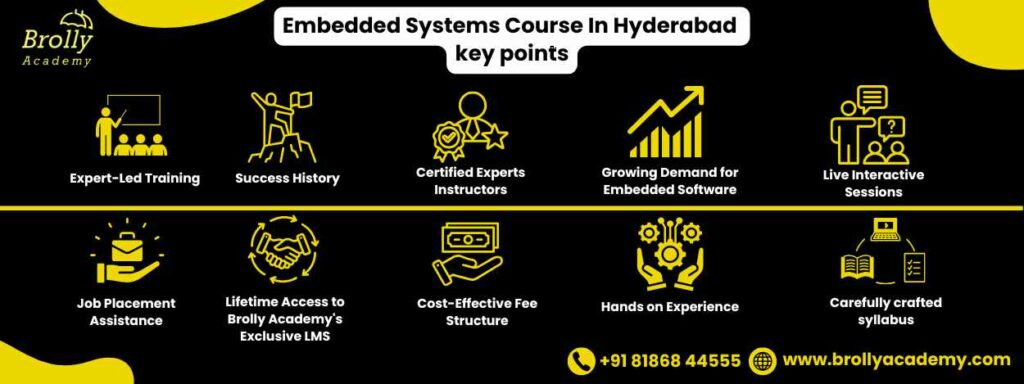
- Expert-Led Training : Our dedicated trainers, Vamsi Raju and Kishore, bring over 15+ years of combined experience in embedded systems. Their knowledge helps students build skills and a thorough understanding of embedded concepts, creating a foundation for successful careers.
- Proven Placement Record : In the past 8 months alone, Brolly Academy has trained over 440 students, with more than 265 successfully placed in relevant positions, highlighting our strong placement support and commitment to student success.
- Hands-on Programming : Learn to program embedded processors with real time applications to create digital devices. Our practical examples and project-based approach help Develop your skills and prepare you for industry challenges.
- Application-Oriented Learning : Master languages such as C, C++, and Embedded C, with an application-focused curriculum that equips students to become industry-ready candidates.
- Practical Learning Focus : We Focus on an 80% practical and 20% theoretical approach, providing a complete understanding of both concepts and applications.
- High-Potential Career Path : Embedded systems offer great career opportunities and good pay, making them a top choice for both beginners and experienced engineers. Brolly Academy prepares you with the skills to succeed in this field.
- AI and Embedded Systems : While AI is advancing, it connects with embedded systems, expanding career prospects. For expertise in embedded technology, Brolly Academy stands out as a top Embedded systems institute in Hyderabad.
- Growing Demand for Embedded Software : We teach essential embedded software skills that are in demand across many industries. At Brolly Academy, our quality training gets you ready to meet this need and lead in innovation.
- Affordable Fees and Comprehensive Syllabus : Brolly Academy offers an affordable, all-inclusive course fee with a detailed syllabus structure that spans beginner to advanced levels, especially in processor programming.
- Lifetime LMS Access and Placement Support : Students receive lifetime access to our Learning Management System (LMS) and continuous placement support, helping them stay connected to course materials and career opportunities.
- Free Demo Class : Join our three-day free demo class to experience our training quality and learning environment before taking the choice.
- Continuous Improvement : After each module, students receive assessments and personalised feedback to plan and enhance their learning journey effectively.
- Flexible Learning Options : Our self-paced video modules allow students to learn on their own time, making them become skilled system architects proficient in embedded C programming.
- Unique Teaching Approach : Unlike traditional methods, Brolly Academy’s embedded systems course offers a helpful approach to delivering the best training in Hyderabad.
- Promising Future in Embedded Systems : With technology constantly evolving, embedded systems remain a vital field. Begin your journey with Brolly Academy, a top Embedded systems institute in Hyderabad, known for its complete training and hands-on experience in embedded technology.
At Brolly Academy, we make advanced embedded systems course easy to understand. We cover all topics like microcontroller operations, the Linux Kernel, task scheduling, and device drivers.
You’ll build practical skills in system programming, synchronization, and macro definitions. Our hands-on training helps you work confidently with embedded systems in any industry.
Overview of Embedded Systems Training in Hyderabad
About
Why Embedded Systems?
Embedded systems are important in today’s tech world because they change how devices work and communicate.
They are used in various applications, from consumer electronics to industrial machines, making them a critical component of modern technology.
With the growing demand for skilled professionals in this field, mastering embedded systems opens doors to numerous career opportunities.
Brolly Academy - The Embedded Systems Training Institute in Hyderabad
At Brolly Academy, We help you gain the skills you need to succeed in embedded systems. Our courses are designed for learners of all levels, helping you build a strong understanding of embedded systems design and development
Expert Instructors:
Embedded Systems Certification Training:
Placement Assistance:
Join Brolly Academy to take the first step towards a successful career in embedded systems. Our institute offers Hyderabad’s best-embedded systems training in India online and in Hyderabad, preparing you to succeed in today’s competitive environment.
An Embedded System is a single-function device designed to perform specialized tasks efficiently.
Key characteristics include:
- Responsive in Real-Time: It reacts instantly to environmental changes and produces results without delays.
- Microprocessor-Based: Built around a microprocessor and includes memory, usually embedded in ROM.
- Connected Peripherals: Has integrated input and output peripherals to interact with external devices.
- Cost-Efficient: Offers high functionality at a low manufacturing cost.
- Optimized Design: Designed with strict metrics for cost, performance, size, and power consumption.
- Core Components: Embedded Systems consist of software, hardware, and a real-time operating system (RTOS).
Where Are Embedded Systems Used?
Embedded Systems are everywhere! They are specialized computer systems designed to perform specific tasks within larger devices. Here are some common places where you’ll find them:
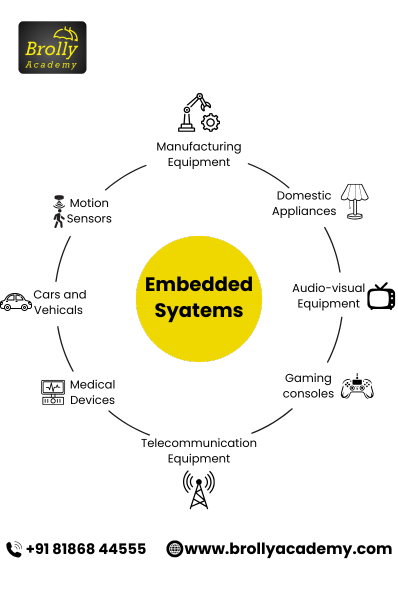
1. Household Appliances
- Washing Machines : Control wash cycles and water levels.
- Microwaves : Manage cooking times and settings.
- Refrigerators : Monitor temperature and manage energy usage.
2. Consumer Electronics:
- Smartphones : Run applications and manage touchscreens.
- Digital Cameras : Process images and manage settings.
- Televisions : Control displays, streaming, and channel settings.
3. Automobiles
- Engine Control Units (ECUs) : Manage engine performance and fuel efficiency.
- Anti-lock Braking Systems (ABS) : Help prevent wheel lock during braking.
- Airbag Systems : Deploy airbags in the event of a crash.
4. Medical Devices
- Heart Rate Monitors : Track patients' heart rates.
- MRI Machines : Control imaging processes.
- Insulin Pumps : Deliver insulin to diabetic patients automatically.
5. Industrial Equipment
- Robots : Control manufacturing processes and assembly lines.
- Programmable Logic Controllers (PLCs) : Automate machinery in factories.
- Sensors : Monitor temperature, pressure, and other environmental factors.
6. Smart Home Devices
- Thermostats : Control heating and cooling systems.
- Security Systems : Monitor and respond to intrusions or alarms.
- Smart Lights : Allow remote control of lighting.
7. Entertainment Systems
- Gaming Consoles : Provide processing power for video games.
- Home Theater Systems : Control audio and video outputs.
8. Telecommunications:
- Routers : Manage data traffic over the internet.
- Modems : Convert data for transmission over various networks.
9. Aerospace and Defense
- Flight Control Systems : Manage aircraft operations and navigation.
- Missile Guidance Systems : Ensure accurate targeting.
Course Outline for Embedded Systems Course at Brolly Academy, Hyderabad
At Brolly Academy, we have designed our Embedded Systems course to prepare you with the essential skills and knowledge necessary for a successful career in this fast-evolving field. The course progresses from basic to advanced topics, Making sure you better understand Embedded Systems
Highlights of the Embedded Systems Course in Hyderabad
- Overview of Embedded Systems Concepts
- Introduction to Embedded Systems and their Applications.
- Understanding the various types of Embedded Systems and their significance in different industries.
- Embedded System Architecture
- Core components of Embedded Systems: processors, memory, and I/O devices.
- Microcontroller vs. microprocessor: Understanding their differences and applications.
- Programming for Embedded Systems
- Introduction to Embedded C/C++ programming.
- Writing basic programs and scripts to interact with hardware components.
- Hands-on coding sessions for practical experience.
- Real-Time Operating Systems (RTOS)
- Fundamentals of real-time systems and their importance in Embedded Systems.
- Overview of popular RTOS options and their features.
- Hardware Design and Development
- Basics of circuit design and implementation.
- Introduction to PCB design and prototyping techniques.
- Hands-on project for building simple hardware circuits.
- Data Management and Communication Protocols
- Understanding data management best practices in Embedded Systems.
- Overview of communication protocols: UART, SPI, I2C, and their applications.
- Automation and Control Systems
- Introduction to automation concepts in Embedded Systems.
- Techniques for automating processes and controlling devices using Embedded Systems.
- Hands-on Projects
- Real-life projects where students will apply concepts learned throughout the course.
- Creating and adapting Embedded Systems applications to meet specific needs.
- Ethical Considerations in Embedded Systems
- Understanding data privacy, security, and ethical issues related to Embedded Systems.
- Best practices for secure and responsible implementation.
- Software Integration
- Embedded Software Development Process And Tools
- How they work in application
- Careers in Embedded Systems
- Overview of various career paths: Embedded Systems developer, firmware engineer, and system architect.
- Guidance on certifications and career growth opportunities in the Embedded Systems domain.
- Presentations and Group Discussions
- Project showcase opportunities for students to present their work and solutions developed during the course.
- Collaborative best practices and innovative applications in the field of Embedded Systems.
Join Brolly Academy to gain an understanding of Embedded Systems and position yourself for a rewarding career in this dynamic industry. Our structured curriculum, experienced instructors, and hands-on projects will ensure that you develop the skills needed to be skilful in the world of Embedded Systems.
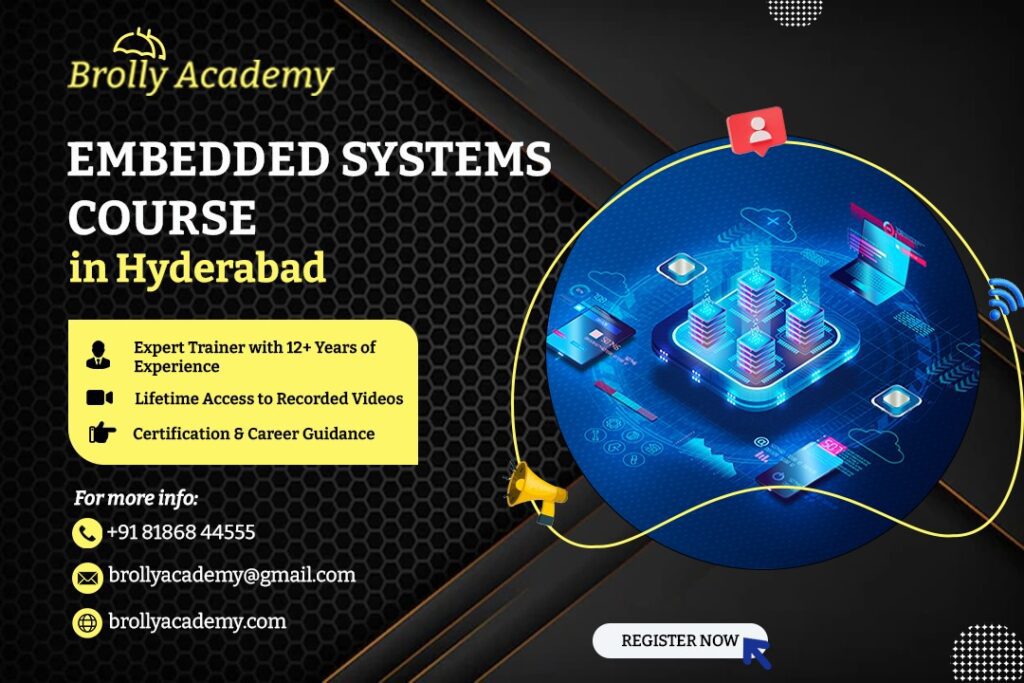
Modes of training
Embedded System Course in Hyderabad
Online Training
- Recorded Video Access Lifetime
- Affordable course fee
- Basic to advance level
- 100% Placement Assistance
- Interview Guidance
- Whatsapp Group Access
Video Course
- Lifetime Video Access
- Basic to advance level
- Doubt-clearing Session
- Certificate Training Dumps
- Course Materials
- Interview Guidance
- What's app group Access
Corporate Training
- Live Project Training
- Batch as per Company Requirement
- Doubt-clearing sessions.
- Course Materials Dumps
- Whatsapp Group Access
- Flexible class timing
Why choose us
Brolly Academy For Embedded System Training In Hyderabad

Experienced Trainers
Our team consists of the best trainers in the Embedded Systems field, dedicated to helping you grow your skills. They will guide you on how to use Embedded Systems effectively, ensuring you get the most from your training.

Hands on Experience
At Brolly Academy, we emphasize hands-on learning. You'll engage in real projects, case studies, and practical exercises, allowing you to apply what you learn directly to your work in Embedded Systems.

Updated Course Curriculum
Our Embedded Systems course syllabus is regularly updated to keep pace with industry changes. This ensures you gain a complete understanding of Embedded Systems and build a solid foundation for your career.

Live Projects
You will have the opportunity to work on live Embedded Systems projects and assignments under the supervision of our skilled trainers. This practical experience is crucial for mastering the technical skills needed in the field.

100% Job Placement *
We provide 100% placement * to help you secure a job in the Embedded Systems industry. Our professional staff is committed to finding you the best possible position to kickstart your career in embedded systems training in Hyderabad.

Embedded systems Certification
Upon completing the program, you will receive a certification recognized in the industry. This certification can enhance your job applications, help you get promotions, or advance your career within your current organization.

Comprehensive Support
We offer continuous support throughout your learning journey. Whether you need help with coursework or career advice, our team is here to assist you.

Flexible Learning Options
With options for online embedded systems courses in Hyderabad, you can learn at your own pace and schedule, making it easier to balance your education with other commitments.

Affordable Course Fees
Our embedded systems course fees in Hyderabad are competitive, ensuring that quality education is accessible. We believe in providing value for your investment in the future.

Free Demo Classes
We offer free demo embedded systems courses in Hyderabad so you can experience our teaching methods and course content before committing. This allows you to make an informed decision about your training.
Choose Brolly Academy as your destination for the best Embedded Systems training in Hyderabad & India. With our experienced trainers, hands-on approach, updated curriculum, and strong placement support, you will be well-prepared for a successful career in Embedded Systems. Enroll today
Market Trends for Embedded Systems
1. Growing IT Migration
2. Market Size
3. Technological Advancements
4. Rapid Growth
5. Lucrative Careers
6. High Demand for Professionals
7. Real-Time Operating Systems (RTOS)
8. 5G Integration
9. AI and Data Science Applications
Embedded Systems are increasingly integrated with AI and data science, leading to smarter and more efficient devices that can analyze data in real-time.
10. Cloud Computing Integration
The synergy between Embedded Systems and cloud computing is transforming how data is processed and stored, enabling better management of IoT devices.
11. Automotive Industry Impact
12. Healthcare Innovations
13. Smart Home Devices
14. Industrial Automation
15. Cybersecurity Focus
As Embedded Systems become more prevalent, the need for cybersecurity professionals to protect these systems from threats is increasing, ensuring job security for skilled workers.
Testimonials
At Brolly Academy, students consistently share positive experiences about their journey through the embedded systems course in Hyderabad. Whether you are interested in online classes or hands-on training, our courses meet your needs and help you succeed in your career!
Certification
At Brolly Academy, students who complete our Embedded Systems course in Hyderabad receive a valuable certification that is widely acknowledged in the industry
- This certification shows employers that you have the skills and knowledge they are looking for.
- To get the certificate, students take part in a thorough assessment that includes hands-on projects and written exams.
- Our certification meets industry standards, ensuring you learn the skills needed for today's job market.
- Many of them have gone on to successful careers as Embedded Systems Developers or Firmware Engineers.
- Our certification is recognized w, which gives you an advantage when applying for jobs.
- We also help guide you on how to pursue advanced certifications in Embedded Systems or other related fields.
- Upon graduation, you can explore additional certifications that can further boost your career, such as Certified Embedded Systems Engineer or Certified Firmware Engineer.
- At Brolly Academy, we are committed to helping you succeed in the exciting field of Embedded Systems!
You will be prepared to apply for jobs in embedded technology. Sign up today for the Embedded systems training institute in Hyderabad and explore this field’s opportunities!
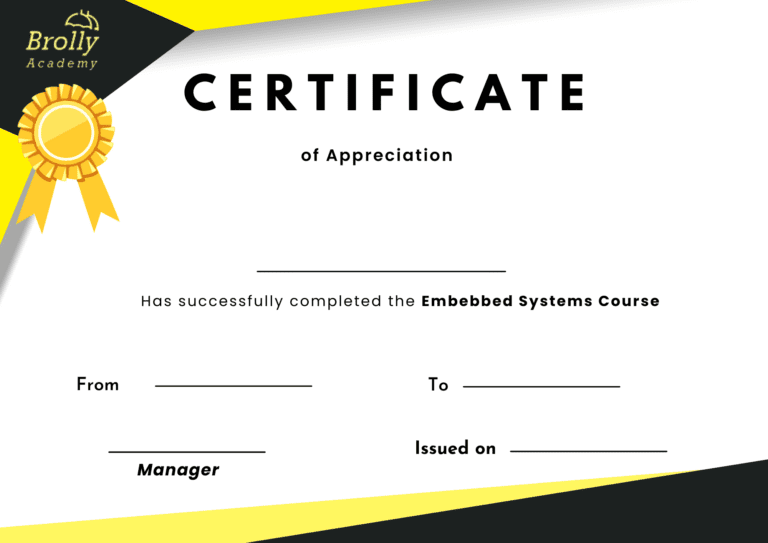
We Guide you get Official Certificate
- Certified Embedded Systems Designer (CESD)
- Certified IoT Professional (CIoTP)
- Embedded Systems Professional (ESP)
- Certified Real-Time Systems Professional (CRSP)
- Certified Software Development Professional (CSDP)
- Embedded Linux Engineer (ELE)
- Certified Wireless Design Professional (CWDP)
- Certified ARM Developer (CAD)
- Certified IoT Practitioner (CIoTP)
- Certified Automation Professional (CAP)
- Certified Embedded Systems Engineer (CESE)
Top Embedded Systems Companies in Hyderabad
- Siemens A global technology company that focuses on automation and digitalization in various industries, including embedded systems.
- Qualcomm Known for its advanced wireless technologies, Qualcomm is a major player in embedded systems, especially in mobile devices.
- NVIDIA Renowned for its graphics processing units (GPUs), NVIDIA also develops embedded systems for AI and deep learning applications.
- Texas Instruments This company offers a wide range of embedded solutions, focusing on microcontrollers and processors.
- Samsung R&D Institute India A leader in electronics and technology, Samsung develops embedded systems for various consumer products.
- Intel Known for its processors, Intel also invests heavily in embedded systems, especially for IoT devices.
- HCL Technologies An IT services company that provides embedded systems solutions across various sectors.
- Cypress Semiconductor Focused on embedded system solutions, particularly in the areas of memory and microcontrollers.
- Capgemini This consulting firm offers embedded systems solutions as part of its broader IT services.
- CureMetrix Specializes in AI-powered embedded systems for medical imaging, enhancing diagnostic accuracy.
By completing the Embedded Systems course in Hyderabad at Brolly Academy, you will be well-prepared to apply for positions in these leading companies and many more. Enroll today
Skill developed
after Embedded systems course in Hyderabad
- Understanding of Embedded Systems Architecture
- Gain in-depth knowledge of the components and structure of embedded systems, including microcontrollers, processors, and peripherals.
- Programming Proficiency
- Develop strong programming skills in languages commonly used in embedded systems, such as C, C++, and assembly language.
- Real-Time Operating Systems (RTOS) Knowledge
- Learn how to work with real-time operating systems, including task scheduling, resource management, and system design.
- Hardware-Software Integration
- Acquire the ability to integrate hardware and software components, ensuring they work seamlessly together.
- Embedded Systems Design Skills
- Master the design process for embedded systems, from initial concept to prototype development and testing.
- Troubleshooting and Debugging
- Enhance your ability to identify and fix issues in embedded systems, using tools and techniques for effective debugging.
- Hands-on Project Experience
- Gain practical experience by working on real-world projects, applying the skills learned throughout the course.
- Knowledge of Communication Protocols
- Understand various communication protocols used in embedded systems, such as I2C, SPI, UART, and CAN.
- Understanding of IoT Concepts
- Explore the integration of embedded systems with Internet of Things technologies, learning about connectivity, data exchange, and cloud integration.
- Soft Skills Development
- Improve teamwork, communication, and problem-solving skills, which are essential for working in collaborative environments.
Tools covered
in the Embedded Systems Course in Hyderabad at Brolly Academy
Integrated Development Environments (IDEs)
- IAR Embedded Workbench : Provides tools for embedded software development with advanced debugging features.
Compilers and Assemblers
- GCC (GNU Compiler Collection) : A widely-used compiler for C and C++ programming in embedded systems.
- ARM Compiler : Specifically designed for ARM architecture, optimized for embedded applications.
Debugging Tools
- JTAG Debuggers : Hardware tools for debugging embedded systems, allowing you to test and troubleshoot code execution.
- In-Circuit Emulators (ICE) : Enable real-time debugging by mimicking the behavior of the target microcontroller.
Simulation Software
- Proteus : Used for simulating and testing embedded systems and circuit designs.
- MATLAB : Tools for modeling, simulating, and analyzing dynamic systems, commonly used in control systems for embedded applications.
Version Control Systems
Real-Time Operating Systems (RTOS)
- FreeRTOS : A popular open-source RTOS used for building embedded applications with multitasking capabilities.
- VxWorks : A commercial RTOS known for its reliability and performance in critical applications.
Hardware Development Tools
- Arduino : A versatile platform for prototyping embedded systems and IoT applications.
- Raspberry Pi : A credit-card-sized computer used for learning and developing embedded applications.
Communication Protocols
- Tools for implementing protocols like I2C, SPI, UART, and CAN, ensuring proper data communication between embedded devices.
PCB Design Software
- Eagle PCB : Used for designing printed circuit boards for embedded systems.
- KiCad : An open-source PCB design tool that allows for designing and producing circuit layouts.
Testing and Validation Tools
- Oscilloscopes : For measuring and analyzing electronic signals in embedded systems.
- Logic Analyzers : Used to capture and display multiple signals from digital circuits.
By covering these tools in the Embedded Systems Course in Hyderabad at Brolly Academy, students will gain hands-on experience and be well-prepared to work with the technologies used in the industry.
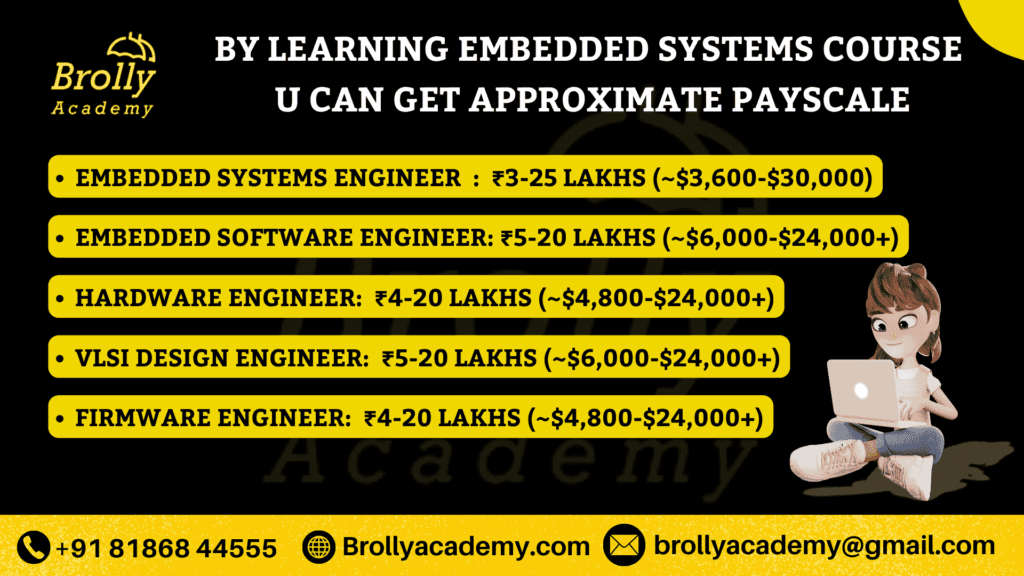
Job Opportunities in Embedded Systems with Salary Estimates

Embedded Systems Developer
- Designs and develops software and firmware to operate embedded systems, ensuring they function as required. They work on code optimization for efficient performance. Typical tasks include debugging and maintaining firmware.
- Salary : $7,200 – $14,400 (₹6,00,000 - ₹12,00,000) per year

Firmware Engineer
- Writes low-level software to control and interact with hardware components, enabling devices to perform specific functions. Firmware engineers work closely with hardware engineers to integrate software with physical devices. They focus on performance tuning and testing.
- Salary : $6,000 – $12,000 (₹5,00,000 - ₹10,00,000) per year

Embedded Software Engineer
- Creates applications that run on embedded devices, ensuring smooth integration and operation. Responsibilities include developing, testing, and maintaining embedded applications across various platforms.
- Salary : $7,200 – $13,200 (₹6,00,000 - ₹11,00,000) per year

IoT Solutions Architect
- Designs and implements IoT systems with embedded devices to create connected solutions. Architects focus on scalability, security, and data management within IoT ecosystems.
- Salary : $12,000 – $24,000 (₹10,00,000 - ₹20,00,000) per year

Embedded Systems Tester
- Conducts validation testing to ensure systems meet quality and functionality requirements. Testers troubleshoot and resolve issues, contributing to reliable embedded products.
- Salary : $4,800 – $9,600 (₹4,00,000 - ₹8,00,000) per year

Hardware Engineer
- Designs and develops hardware components that form the backbone of embedded systems. They work on circuit design, prototyping, and integration of electronics.
- Salary : $7,200 – $14,400 (₹6,00,000 - ₹12,00,000) per year

Systems Engineer
- Manages integration of hardware and software, ensuring seamless operation of embedded systems. Engineers coordinate with various teams to ensure system reliability.
- Salary : $8,400 – $16,800 (₹7,00,000 - ₹14,00,000) per year

Application Engineer
- Provides technical support and solutions for implementing embedded systems, focusing on meeting client requirements. They address operational challenges and deliver tailored solutions.
- Salary : $6,000 – $12,000 (₹5,00,000 - ₹10,00,000) per year

Robotics Engineer
- Designs and develops embedded systems for robotics, enhancing functionality and automation. Responsibilities include coding and testing algorithms for robotic movements.
- Salary : $8,400 – $18,000 (₹7,00,000 - ₹15,00,000) per year

Automotive Embedded Systems Engineer
- Works on embedded technologies used in modern vehicles, such as infotainment and navigation systems. Engineers ensure safety and performance standards are met.
- Salary : $9,600 – $19,200 (₹8,00,000 - ₹16,00,000) per year

Telecommunications Engineer
- Develops embedded systems for communication devices, focusing on signal processing and network integration. Engineers optimize devices for clarity and connectivity.
- Salary : $7,200 – $14,400 (₹6,00,000 - ₹12,00,000) per year

Research and Development Engineer
- Innovates in embedded technology, focusing on new product development and advancements in system capabilities. They conduct experiments to improve current technologies.
- Salary : $9,600 – $18,000 (₹8,00,000 - ₹15,00,000) per year

Technical Consultant
- Provides expertise on embedded system design and deployment, advising on best practices and project efficiency. They also aid in troubleshooting and solution design.
- Salary : $10,800 – $21,600 (₹9,00,000 - ₹18,00,000) per year

Field Application Engineer
- Supports clients in integrating embedded systems into their products, ensuring functionality and compliance. They assist with troubleshooting and installation.
- Salary : $7,200 – $14,400 (₹6,00,000 - ₹12,00,000) per year

Product Manager
- Manages the end-to-end lifecycle of embedded products, from design to market release. They coordinate teams and resources to meet product goals.
- Salary : $12,000 – $24,000 (₹10,00,000 - ₹20,00,000) per year
Pre - requisites
for the Embedded Systems Course in Hyderabad at Brolly Academy
- Electrical and Electronics Engineering (EEE)
- Computer Science and Engineering (CSE)
- Electronics and Communication Engineering (ECE)
- Mechanical Engineering
- B.Tech in Mechatronics
- M.Sc. in Computers or MCA
- M.Sc. in Electronics
- M.Tech in Computers or Electronics
- Aerospace Engineering
- Biotechnology
- Strong analytical and problem-solving skills will aid in understanding complex system designs and debugging processes.
- Familiarity with electronic components, circuits, and basic principles of electronics is helpful.
- A solid understanding of mathematics, particularly algebra and basic calculus, is beneficial for grasping concepts related to algorithms and signal processing.
A keen interest in technology and electronics will enhance your learning experience and engagement throughout the course.
- A foundational knowledge of programming languages, especially C or C++, is essential as these are commonly used in embedded systems development.
- Proficiency in using computers and basic software applications is important for programming and simulation tools used in the course.
Companies Hiring Embedded Systems Professionals
Technology Companies
Texas
Qualcomm
Intel
NVIDIA
Bosch
Honeywell
Siemens
Analog
Renesas Electronics
Thales Group
Samsung Electronics
Cisco Systems
Ford Motor Company
General Electric (GE)
IBM
Embedded systems course in Hyderabad
FAQ’s
Is Embedded Systems a Good Career in 2025?
Absolutely! Embedded systems will continue to be a lucrative career choice in 2025 and beyond. As technology evolves, the demand for skilled professionals in this field will only increase.
For those looking to build a successful career in embedded systems, consider enrolling in the Embedded Systems course in Hyderabad at Brolly Academy. With experienced trainers and a comprehensive curriculum, it’s the best place to kickstart your journey in embedded technology!
What is RTOS in an Embedded System?
What is the Embedded Systems Course?
The Embedded Systems course in Hyderabad and India focuses on providing the skills and knowledge needed to design and develop embedded systems. At Brolly Academy in Hyderabad, the course covers essential topics, including microcontrollers, programming, and system design, preparing students for a successful career in the field.
How Does an Embedded System Communicate with the Outside World?
Why is C Used in Embedded Systems?
Which Software is Used for Embedded Systems?
How Long is the Embedded Systems Course?
Where to Learn Embedded Systems Course in Hyderabad?
You can learn the Embedded Systems course in Hyderabad at Brolly Academy, one of the best-embedded systems training institutes in Hyderabad. With expert trainers and a well-structured curriculum, you’ll gain the skills needed for a successful career.
Embedded Systems Course Near Me?
How Much is the Embedded Systems Course Fee in Hyderabad at Brolly Academy?
Which Language is Best for Embedded Systems?
What Are the Qualifications for Embedded Systems?
To enroll in an embedded systems course in Hyderabad at Brolly Academy, a background in engineering (like EEE, CSE, or ECE) or computer science is beneficial. Basic knowledge of electronics and programming is also recommended.
